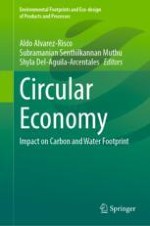2022 | Book
Circular Economy
Impact on Carbon and Water Footprint
Editors: Dr. Aldo Alvarez-Risco, Dr. Subramanian Senthilkannan Muthu, Shyla Del-Aguila-Arcentales
Publisher: Springer Singapore
Book Series : Environmental Footprints and Eco-design of Products and Processes
